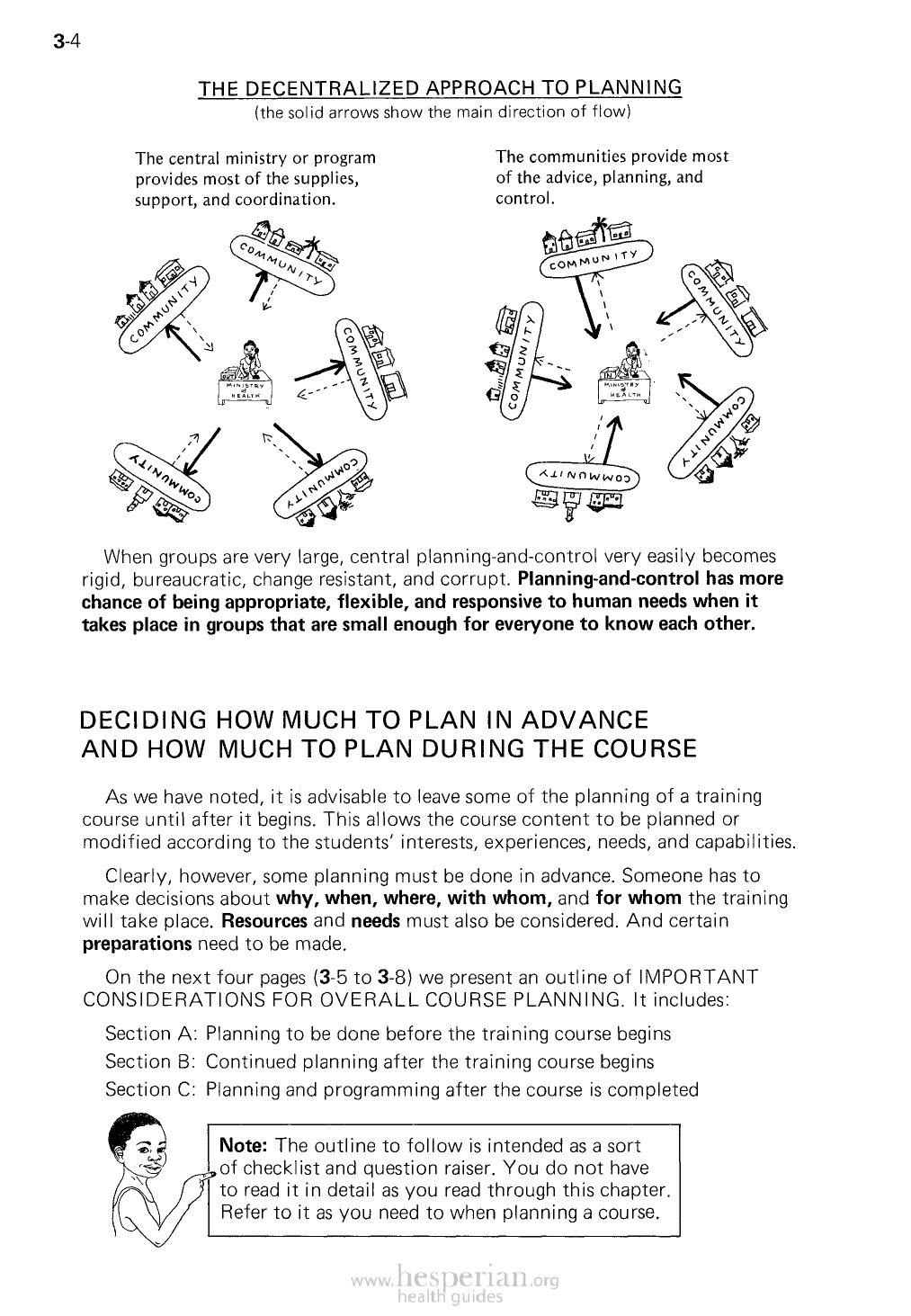
3-4
THE DECENTRALIZED APPROACH TO PLANNING
(the solid arrows show the main direction of flow)
The central ministry or program
provides most of the supplies,
support, and coordination.
The communities provide most
of the advice, planning, and
control.
When groups are very large, central planning-and-control very easily becomes rigid,
bureaucratic, change resistant, and corrupt. Planning-and-control has more chance
of being appropriate, flexible, and responsive to human needs when it takes
place in groups that are small enough for everyone to know each other.
DECIDING HOW MUCH TO PLAN IN ADVANCE
AND HOW MUCH TO PLAN DURING THE COURSE
As we have noted, it is advisable to leave some of the planning of a training course
until after it begins. This allows the course content to be planned or modified according
to the students’ interests, experiences, needs, and capabilities.
Clearly, however, some planning must be done in advance. Someone has to make
decisions about why, when, where, with whom, and for whom the training will
take place. Resources and needs must also be considered. And certain preparations
need to be made.
On the next four pages (3-5 to 3-8) we present an outline of IMPORTANT
CONSIDERATIONS FOR OVERALL COURSE PLANNING. It includes:
Section A: Planning to be done before the training course begins
Section B: Continued planning after the training course begins
Section C: Planning and programming after the course is completed
Note: The outline to follow is intended as a sort ,of
checklist and question raiser. You do not have to read
it in detail as you read through this chapter. Refer to it
as you need to when planning a course.